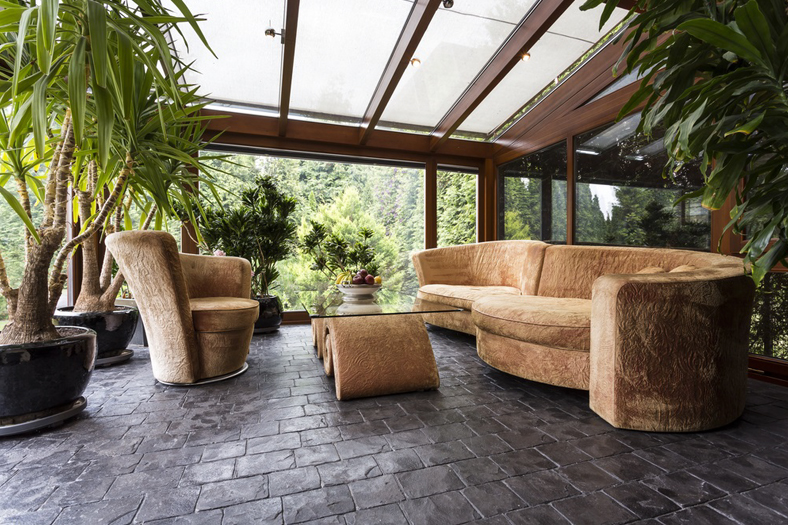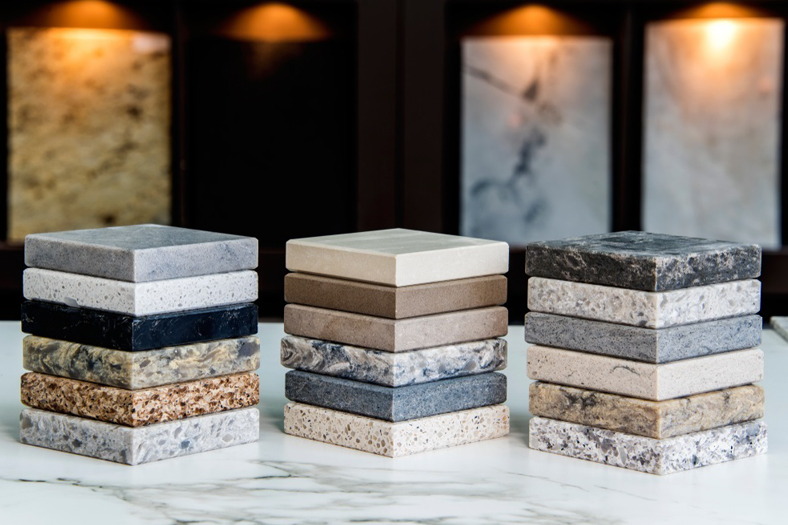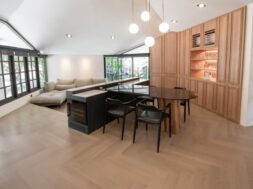
Flooring: From Then to Now
The evolution of flooring has led to the genesis of newer materials, then there are some which continue to remain in vogue from time immemorial.
Flooring is an integral part of architecture and design, floors not only help in navigating a property but it is also, in a way, akin to a canvas of creativity, just like the walls. Floors act as a testament of the design taste of its occupants, it also acts as a symbol of prestige. Hence it’s no wonder that royal palaces and heritage properties have floors that make a design statement. “During the late 19th century/20th century,” says Aishwarya Tipnis, Principal Architect, Aishwarya Tipnis Architects “we do find buildings with exquisite patterns of encaustic tiling like the Minton Tiling in many palaces and palatial homes. In other palaces, the use of exquisite marbles is also seen, along with China mosaic flooring depending on the location of the building.” Nowadays taking a cue from the royal heritage even modern-day luxurious properties tend to invoke similar flooring styles, at times, using newer materials.

The evolution of flooring is an interesting tale; from an element of necessity to a statement of luxury, it keeps swinging between these two nodes. Much of this has to do with the material utilized for flooring and not to forget the craftsmanship involved. Materially speaking, one of the key materials which continues to remain in vogue for flooring and other applications, even today, is marble and there are numerous reasons for its contemporary existence. “Marble is a very versatile material,” says Sumit Dhawan, Founder & Principal Architect, Cityspace’82 Architects, “which is able to provide even contemporary residences with an elegant and luxurious finish. It is extremely durable and resistant to chips, making it a perfect fit for families with pets or toddlers. Most importantly, marble is very easy to clean up, making it a suitable choice for families across various demographics.”
When it comes to marble, what states like Gujarat, Rajasthan and Madhya Pradesh are to India, Carrara in Italy is to the world. Marble has an extensive history in Italy, it has been a part of Italian culture and industry for over 2000 years. The most common types of white Italian marble are Carrara, Calacatta, and Statuario. Likewise in India, we can see the intricate use of marble, especially in temples apart from the marble inlay visible till date in rajwadis, raaj gharanas and raaj baaris. Apart from aesthetics, the availability and easy maintenance of marble floors also aids its popularity in the contemporary timeline “Marble is a metamorphic rock that is easily available in various gradations of quality,” points out Robin Sisodiya, Founder & Principal Architect, ASRO Arcade, “once installed, the maintenance of the floor is relatively easy. If marble is used as flooring in bathrooms, one needs to practice utmost caution as it gets extremely slippery when wet. That being said, marble is still a widely loved material as it is of excellent aesthetic value.”
If we step back in time, in India, cement oxide flooring was quite a rage. Though it may have taken a back seat in the view of the other flooring options which have emerged, it still remains one of the simplest and most economical ways to design a floor that is robust and low on maintenance. In far-off suburbs where land is ample and people design their homes on designated plots and in some resorts too, cement oxide flooring continues to remain prevalent.

Another ancient flooring technique which exists till date in concrete flooring. Concrete flooring, invented way back in 6500 BC was restricted to just warehouses, factories and garages. However, nowadays they are used for residential properties too. This is possible because today concrete floors can be polished smooth, they can also be painted or stained with a variety of techniques that make them look like natural materials. Complex printed designs can also be embedded in concrete floors.
In the urban landscape, the buildings in our cities act as an epitome of individual ambitions which scale from 40.5 ft. to 919 ft. in height and range from 720 sq. ft. to 2400 sq. ft. and more. Within this defined framework, a world of wonders is created for the occupants who want nothing short of the very best and at a cost that is competitive. In view of such needs newer options for flooring which are being extensively used include vinyl, granite, hardwood and concrete. “The newer flooring materials today,” say Anurag Pashine & Pallavi Pashine, Principal Architects, Salankar & Pashine Associates, “are chosen on the basis of requirements and their applications. It needs to be responsive to social and technical pressures while producing goods at a reasonable cost. Sustainability is one of the overarching themes being used with flooring products that are compliant with the indoor air quality emission requirements.”
“Choosing a sustainable material is the only choice,” asserts Nilesh Gandhi, Principal Architect, Metadesigns India Pvt. Ltd., “the challenge is in identifying the right product. Materials manufactured nearby to reduce travel should be preferred. Using a material that has the ability to be recycled and reutilized like some vitrified tiles are just a few approaches to put on our thinking hats towards a sustainable flooring solution.”

The market too has responded by ushering in newer flooring materials which are sustainable. “Linoleum, being sustainable,” says Shaily Ganatra, Founder & Principal Designer, The Auura Interior Designer Studio, “is one of the newer flooring materials which is in vogue , it comes in an array of colors with a longer shelf life. Likewise glass tiles are another renewable flooring material that is fast becoming a popular option along with concrete and reclaimed hardwood.”
Apart from cost considerations and sustainability, newer materials are also utilized to express newer experiences. Designer Rohit Suraj, Founding Principal & Design Director, Urban Zen says “I believe new-age materials are seeing a rapid rise in terms of usage in floorings within the industry. Both professionals and clients are looking to create unique experiences and flooring has become an important medium of expression!”
When it comes to finding the right flooring option for contemporary homes vinyl flooring offers a good solution. Vinyl flooring offers a range of colors, patterns, and textures at relatively modest costs. Apart from being literally maintenance-free, they can resist heat and hence are most suitable for homes built in areas where the summers are harsh. People who wish to add an element of grandiose in their floors choose granite too, more so, because granite not only looks opulent but it is also resistant to abrasion, staining, and discoloration, it is in fact, the strongest of all-natural stones.
Apart from natural stones, wood also continues to remain a popular material for flooring, one reason for its popularity is based on the fact that it can be cleaned real quick. “The trend these days is to opt for hard flooring,” says Abhishek Chadha, CEO & Founder, The KariGhars “with a strong emphasis on wood or stone patterns. When it comes to aesthetics, interior designers are encouraging clients to adapt patterned flooring as it is versatile and adds a certain amount of panache to their homes.” However wooden flooring remains vulnerable to moisture and not to mention the installation process is not very easy either. Nevertheless, given its versatile nature, it remains a good choice for both traditional and contemporary homes. Irrespective of the fact of it being used in a residential project or a commercial office space, wooden flooring adds a charm of its own.
Most of the flooring materials can last for generations together. With time they juxtapose themselves in the human psyche as a metaphor of time which has witnessed both gloom and exuberance; much like the life of the human species itself which has witnessed both agony and ecstasy.












